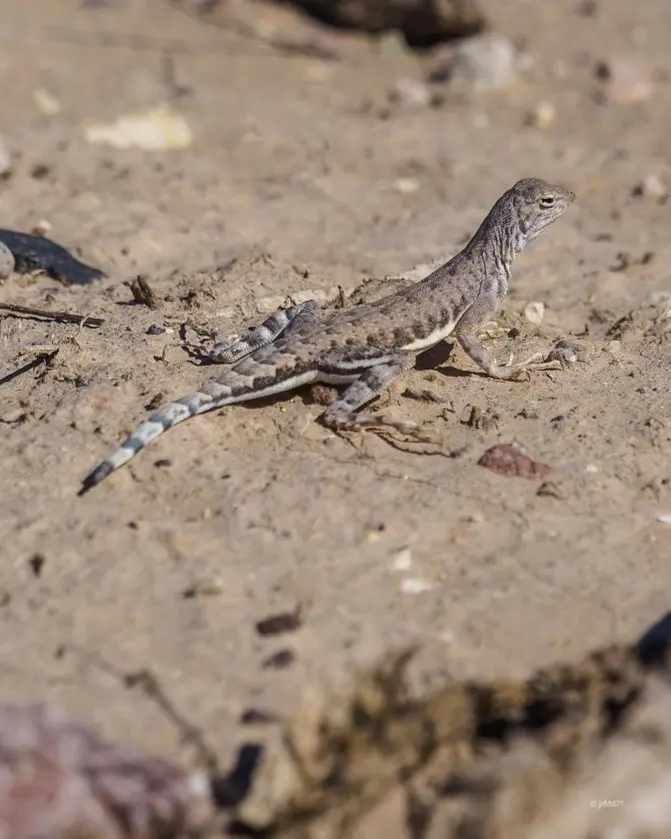The Western Zebra-tailed Lizard

Zebra-tailed lizards (Callisaurus draconides rhodostictus) are fascinating residents of the “dry side” of Clark County Wetlands Park. Their range includes the southwestern United States and northwestern Mexico, including southern Nevada, southeastern California, southwestern Utah, western and southern Arizona, and southwest New Mexico. At the Park, they are often seen in the desert scrub habitat along the north side of the Wetlands Park Loop Trail.
These small (up to 4” from tip of nose to base of tail) lizards have long, slender legs and rather flat black and white striped tails. They are built for speed, and are the fastest lizards in the Mohave Desert, able to reach 28 miles an hour in short sprints! They run semi-erect on only their back legs with their tails curled forward, racing so fast that they are almost impossible for the eye to see. Their protective coloring often hides them from view until they suddenly leap forward and dash away for a hundred feet or so before slamming on the brakes and disappearing against the ground or under a convenient bush.
In spite of their ability as runners, zebra-tails are “ambush hunters” that sit and wait quietly for the food truck to roll in with lunch. With their showy striped tails flat on the ground, waiting zebra-tails are nearly invisible. When food appears, the lizards rush forward to grab it. On the menu are insects including beetles, grasshoppers, bees, wasps, roaches, ants, termites, true bugs, flies, and even insect larvae. Other lizards (and shed lizard skins), spiders, and bits of leaves and flowers round out their meals.
Many predators find zebra-tails themselves excellent food; other lizards, snakes, birds, and mammals all prey on them. Their protective coloration and “sit and wait” hunting style are their first line of defense against being eaten. When a predator gets too close for comfort, the lizards curl their striped tails forward and begin to “wave” them from side to side to distract the predator from their head and body, inviting it to look at the tail. The tails will separate easily from the rest of the them if grabbed, and allow them to escape. Their tails will regenerate (at least partially) in time, and many lizards are seen with tails that have regrown. As a last resort, the zebra-tail makes a very fast dart to the safety of a nearby bush.
Zebra-tailed lizards are active from February to October over most of their range, including the hottest summer days. When temperatures soar, the lizards often adopt an elevated position when basking, with most of their bodies, tails, and even their toes raised from the ground. This posture probably helps prevent them from overheating, since it minimizes contact with the hot substrate they are sitting on!
When walking or biking on the dry north side of the Park, keep your eyes peeled for a zebra-tail waiting quietly for its prey. If it startles and rushes off, scan about a hundred feet ahead, checking shady spots beneath the creosote and white bur sage. The lizard has probably stopped, and is waiting again for you to walk on by! Binoculars are a wonderful way to watch a zebra-tail going about its business. You may even see it capture some lunch, if you are patient.
– By Chris Leavitt; photography from anonymous Facebook photographer.
Please enjoy these YouTube videos:
Zebra-tailed Lizard Drinks and Runs Away at 15 mph Desert Critters of Arizona 0:25
Defensive Behavior of the Zebra-Tailed Lizard Flying High On Points 0:54
Callisaurus draconides Carl J. Franklin 1:32
